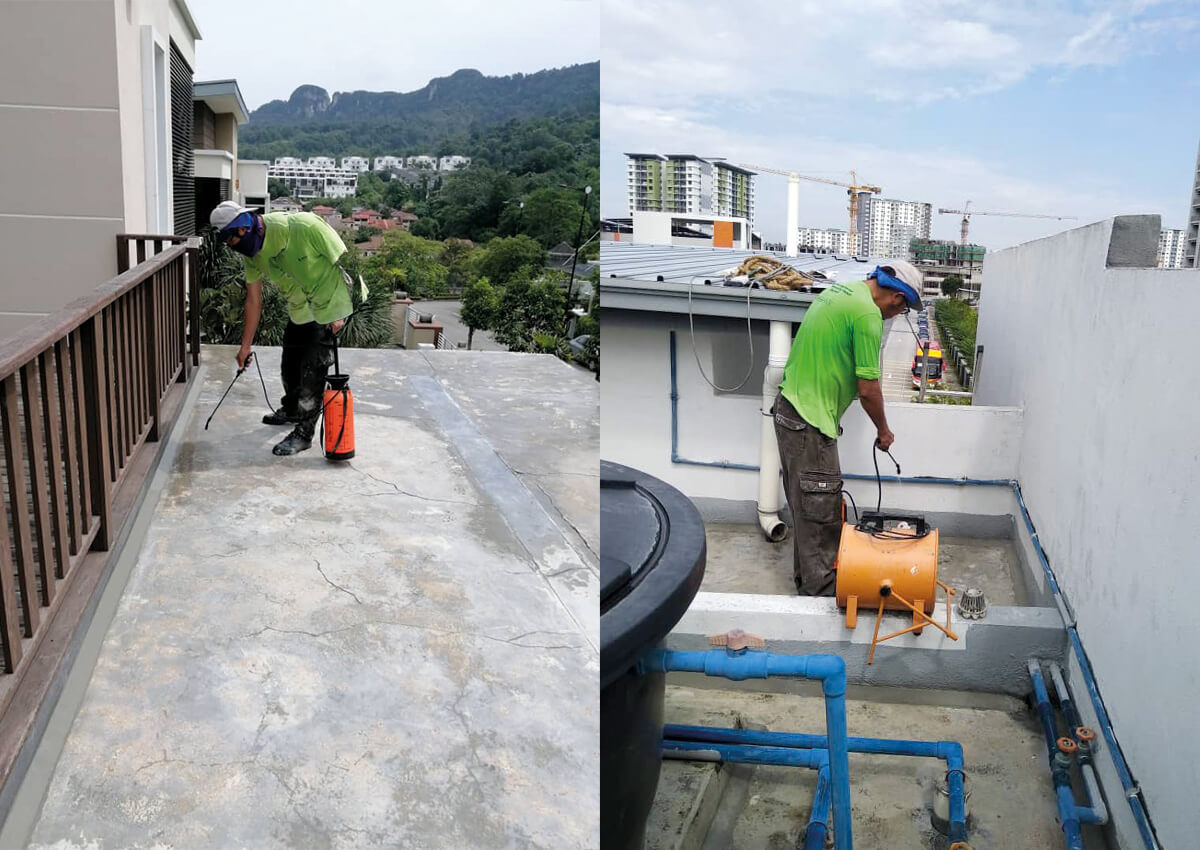An Homeowner’s Checklist for Moisture-Proofing Achievement

Water proofing is a vital aspect of house maintenance that often gets ignored. Many property owners fail to realize the significance of keeping their houses safe from water damage, which can lead to pricy repairs and long-term structural issues. Comprehending why waterproofing is necessary for all home and structure is the initial step towards guaranteeing a safe and dry environment for your family. With the ability to save thousands in repairs, the advantages of waterproofing far outweigh the upfront investment.
In this comprehensive guide to waterproofing, we will cover everything you need to know about safeguarding your home from water damage. Whether you're dealing with a watery basement, a vulnerable roof, or humidity-prone areas like bathrooms and cooking spaces, our checklist will provide you with the knowledge you need to take steps. From disproving common waterproofing myths to identifying the signs that your home needs care, we have you included. Let's plunge into the essential strategies for waterproofing achievement and make your house a fortress against moisture.
Understanding the Essential Nature of Water Resistance
Water resistance is an critical aspect of house and building maintenance that often goes unnoticed. Without proper waterproofing, a property is vulnerable to liquid damage, which can lead to construction problems, mildew development, and expensive fixes. By implementing waterproofing techniques, homeowners can defend their properties and enhance the overall resilience of their structures.
One of the main reasons waterproofing is crucial is the stopping of moisture entry. Whether it's through the footing, top, or walls, water can leak into a building, causing harm that may not be evident right away. By addressing these potential access areas, owners can steer clear of major financial burdens related to restorations and upgrades in the long run. Not only does waterproofing shield against existing dangers, but it also serves as a anticipatory measure against future risks.
In addition, effective waterproofing adds to thermal efficiency in properties. When water is managed, the likelihood of thermal inefficiency due to dampness is lessened, resulting in lower climate control expenses. Investing in waterproofing not only shields your home but also offers monetary gains through prospective discounts, making it an crucial consideration for any building manager.

Essential Moisture-Proofing Methods and Solutions
Effective waterproofing starts with a thorough assessment of your property to identify vulnerable areas. For cellars, applying waterproof coatings and membranes on surfaces and floors can prevent moisture intrusion. Interior methods such as drainage systems and sump pumps aid manage water intrusion by directing it away from critical areas. Additionally, making sure that gutters and downspouts are functioning well can reduce water gathering near your foundation.
When dealing with roofs, picking the right waterproofing materials is crucial. Liquid waterproofing membranes are common for flat roofs, as they provide a seamless barrier against leaks. For sloped roofs, selecting quality waterproofing coatings can protect against extreme weather and increase the lifespan of roofing materials. Regular maintenance is critical, including inspecting for cracks and verifying seals around vents and chimneys are uncompromised.
Ultimately, waterproofing outdoor structures such as decks and patios requires specific techniques to enhance durability. Utilizing sealants designed for exterior surfaces can avoid water damage and improve life span. For balconies and terraces, proper drainage systems are necessary to avoid water gathering and following structural issues. By using Visit this website , homeowners can ensure comprehensive protection from moisture-associated problems.
Formulating Educated Decisions: DIY vs. Expert Waterproofing
When deciding between DIY and professional waterproofing, it is crucial to evaluate your capabilities, the complexity of the project, and the potential risks involved. DIY waterproofing can be inviting due to the lower costs and the sense of achievement of finishing a home improvement project. However, many homeowners misjudge the technicalities required in effectively waterproofing areas like cellars or roofing. Mistakes committed during a DIY project can result in larger issues down the line, which could costing more in repairs than if a professional had been hired from the beginning.
Alternatively, hiring a professional waterproofing contractor provides that the job is completed correctly and effectively. Professionals offer expertise, specific tools, and access to high-quality materials that the average homeowner may not have. In addition, they can detect underlying issues that may not be immediately apparent to an untrained eye. This level of care can save homeowners time and costs over the long term by preventing problems such as mold growth, structural damage, and potential health hazards from water intrusion.
Ultimately, the decision between DIY and expert waterproofing should hinge on your level of comfort with home improvement projects, the particular requirements of the waterproofing task at hand, and your financial limits. If the project is simple and you have the necessary skills, DIY may be the best option. Yet, for trickier challenges or if you are uncertain, investing in professional services is often the smarter choice, offering peace of mind and long-lasting results.
